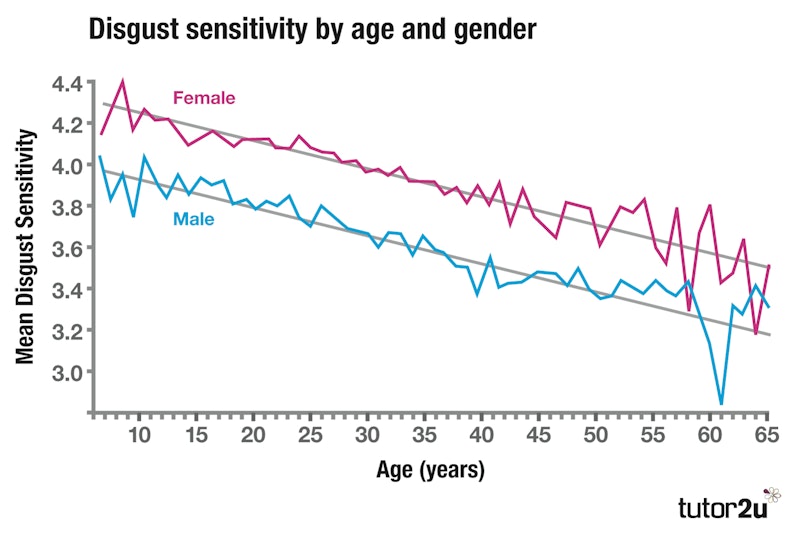Study Notes
Curtis et al. (2004)
- Level:
- AS, A-Level, IB
- Board:
- AQA, Edexcel, OCR, IB, Eduqas, WJEC
Last updated 22 Mar 2021
Evidence that disgust evolved to protect from risk of disease.
Background information: Disgust is thought to be universal in humans and has an associated facial expression that is recognizable across cultures. Its physiological manifestations include lowered blood pressure and galvanic skin response, nausea and actions including stopping, dropping the object of disgust and shuddering. MRI studies have located a neurological substrate for perceiving facial expressions of disgust in the anterior insula cortex.
Aim: To test the hypothesis that disgust is an adaptation that serves to prevent disease.
Method: A survey instrument was placed on the BBC Science website and completed by over 77,000 people from 165 countries. Once improbable data had been removed, and those who had already seen a BBC programme that alerted them to the hypothesis were also removed, this left just under 40,000 respondents. Respondents were asked to rate 20 photographs, which appeared one-by-one on separate web pages, for disgust on a scale of 1–5. Randomly placed among the 20 photographs were seven pairs: one depicting a disease-salient stimulus and another matched to be as similar as possible, but without disease relevance.
A final question on the Web site asked respondents to choose with whom they would least like to share a toothbrush.
Results: All seven of the disease-salient images were rated as more disgusting by females than males rated them. Feelings of disgust decreased with age, and in response to the final question regarding with whom participants would least like to share a toothbrush, the least acceptable was the postman (59.3%), followed by the boss at work (24.7%), the weatherman (8.9%), a sibling (3.3%), a best friend (1.9%) and the spouse/partner (1.8%).

Conclusion: This gender-bias in the result is consistent with women’s enhanced evolutionary role in protecting the next generation.The decline with age is explained by the fact that older people have finished their reproductive life and are therefore evolutionarily disposable, and finally, the preference for toothbrush-sharing with a partner rather than a stranger is explained thus: sharing a person’s bodily fluids becomes more disgusting as that person becomes less familiar because strangers are more likely to carry new diseases and hence present a greater threat to another person’s immune system.
Evaluation:
Strengths: This was a large-scale cross-cultural survey with many participants and unlikely responses were excluded (all 1s in the answers or all 5s). The data was therefore robust and it seems that the significant differences found in 6 of the 7 pairs between the levels of disgust when looking at the disease-irrelevant picture and the levels of disgust shown at the disease-relevant picture are reliable findings.
Limitations: 75% of theparticipants were between 16 and 65 years of age, with only 10% over 65 years old. Therefore the age range shown on the graph is misleading, and the responses for under-16s and over-65s come from a much smaller group of people. The sample is also skewed towards those who have a computer and those who answer surveys of this kind. Finally, 78% of respondents were from Europe, and the majority of them from the UK, so the research was not as cross-cultural as it might seem, which affects the validity and reliability.
For More Study Notes…
To keep up-to-date with the tutor2u Psychology team, follow us on Twitter @tutor2uPsych, Facebook AQA / OCR / Edexcel / Student or subscribe to the Psychology Daily Digest and get new content delivered to your inbox!